Eggs: 7 Easy Ways to Safely Feed Your Baby Eggs
- Why eggs are one of the easiest allergenic foods to offer to your baby...and why we no longer wait on feeding babies egg white until after age 1
- 7 different ways that babies can safely eat eggs - this is not an exhaustive list but if we keep in mind that allergic reaction can occur on the 2nd or subsequent exposure, you'll get a few good usable ideas on how you can introduce eggs early and often
- A vegan substitute for eggs if you don't eat eggs because of egg allergy or because your family does not eat animal products

LISTEN TO THIS EPISODE
Episode Description
Eggs are a versatile food that are easy to feed your baby. As a Big 8 allergenic food (the 8 foods that account for about 90% of food allergy) eggs are a food to offer your baby early and often. For both nutrition and allergenic food introduction reasons, it’s safe and ideal to offer your baby both the egg white and the egg yolk beginning at 6 months of age. In this episode we’re diving deep into many of the different ways you can prepare eggs to safely offer your baby for baby-led weaning.
Links from this Episode
- Easy zucchini egg cup recipe for baby-led weaning from my Instagram account @babyledweanteam is here.
- Baby-Led Weaning with Katie Ferraro program with the 100 First Foods™ Daily Meal Plan, join here: https://babyledweaning.co/program
- Baby-Led Weaning for Beginners free online workshop with 100 First Foods™ list to all attendees, register here: https://babyledweaning.co/baby-led-weaning-for-beginners

Latest Episodes
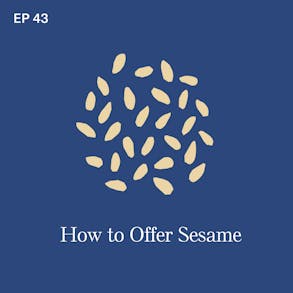
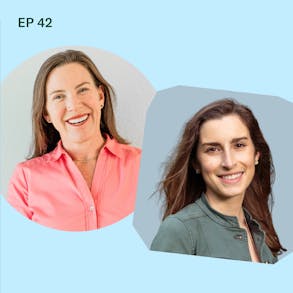

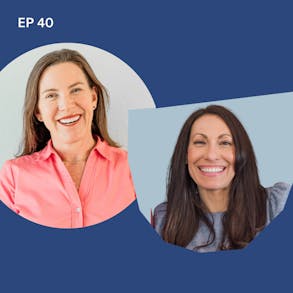
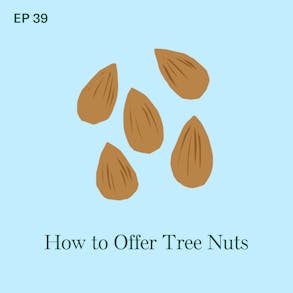
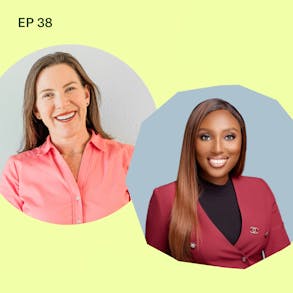
Katie Ferraro (1s):
And I know parents and caregivers that love to make and feed babies scrambled eggs, and there's nothing wrong with scrambled eggs, but keep in mind that early on at six and seven months of age, the baby doesn't have their pincer grasp yet, and they won't be able to pick up a very small piece of scrambled egg to self-feed. Hey there, I'm Katie Ferraro, Registered Dietitian, college nutrition professor, and mama of seven specializing in baby-led weaning. Here on the Baby-Led Weaning Made Easy podcast I help you strip out all of the noise and nonsense about feeding, leaving you with the competence and knowledge you need to give your baby a safe start to solid foods using baby-led weaning.
Katie Ferraro (44s):
You guys ready to talk about eggs? I hope so because this is an episode dedicated to eggs and seven easy ways to safely feed your baby egg. Now you might be like seven that's so random. I was going to do 11, but I paired it back to seven. You're welcome. And there's actually a method to my madness here with the eggs. The seven is because when I teach my 100 First Foods approach to starting solids with baby-led weaning, it's based on my five step feeding framework. So Monday to Friday, you introduce your baby to one new food. You do five new foods a week. You do 20 foods a month. That's 100 foods before your baby turns. One, Monday to Thursday, we do low risk foods. Those are foods that are not likely to cause an allergy, but on Friday, even starting at the first week of baby-led weaning.
Katie Ferraro (1m 25s):
I love to see parents and caregivers offering one new allergenic food per week. We do that on Friday. I like to see you doing the allergenic food twice on Friday, same one twice on Saturday, same one twice on Sunday. You're building in a three-day pad there to observe for any potential allergic reaction, no other new foods over the weekend, but you certainly reintroduce some of the familiar foods your baby has already had. And that way over the course of the weekend, your baby's had let's say egg or whatever. The allergenic food may be six different times. We know that the data supports the idea of introducing foods like eggs early and often in order to prevent egg allergy. But keep in mind that your baby, if they're going to have an allergic reaction to egg, it's rare less than 2% of children are allergic to eggs, but it's unlikely to occur on the first reaction.
Katie Ferraro (2m 12s):
An allergic reaction will likely occur on the second or subsequent reaction. So if you do egg six times over the course of the weekend, you've got your bases pretty well covered. So I'm going to give you seven ways that you can do egg. Hopefully you can pick six of them that you like, and you don't have to make it six different ways for your baby over the course of the weekend. But I want you to have a wide variety of ideas for how you can safely feed your baby egg. And don't worry for those of you that aren't big egg people, or if your baby's allergic to egg, I'm also going to share for you a recipe for an egg substitute that works. Now, it doesn't count for exposing your baby to egg allergy or the egg protein rather, but it does work as far as cooking or baking because eggs act as a binding agent, they ask as a leavening agent and this substitution, which vegan and doesn't contain egg will work for those of you that do have egg allergy.
Katie Ferraro (3m 4s):
So let's go ahead and dive in talking all about eggs and seven easy ways you can feed your baby eggs. All right, so eggs are one of the foods that we want our babies to be exposed to early and often eggs are one of the big eight allergenic foods. Those are the eight foods that account for about 90% of food allergy. And if this is news to you and you're like, whoa, what? I thought babies don't eat eggs until after they turn one that is old outdated recommendations. We don't follow those guidelines anymore. The data supports the idea that we introduce eggs early and often starting at around six months of age. So if you want to learn more about how to introduce your baby to the potentially allergenic food egg, there's an earlier episode where I went all into depth about the research behind introducing eggs early, how it helps prevent egg allergy and the safe way to start eggs.
Katie Ferraro (3m 56s):
That's Episode No. 15. But my assumption here is like, all right, you're on board with the idea of feeding your baby egg, but you're like, oh, how do I do it? Like, do I just scramble eggs all the time? And you can, your baby will probably not get bored of scrambled eggs, but scrambled eggs are hard to eat at six and seven months of age because you don't have your pincer grasp, right? Babies develop their pincer grasp at around the eight month mark, but eggs are a food. We definitely want to feed somewhere in the six or the seven month mark. So we need to find a better way to feed babies exit. They can self feed. So I'm going to go ahead and get right into it. The seven different ways that you can feed your baby egg. My absolute favorite way to start with feeding a baby egg. You do not have to be a gourmet chef to do this guys is to fry the egg.
Katie Ferraro (4m 40s):
That's right. Put some of your favorite oil in the pan or non-stick spray, whatever you use to cook eggs. And if you're doing butter, remember that does contain cows milk. That is a separate allergenic foods. So make sure your baby's already been exposed to cow's milk protein, a number of times, without reaction before you fry an egg for the first time for your baby in butter, which has milk for the first time, we don't want to introduce two allergenic foods at the same time. Cause if there was a reaction, how would you know which one caused the reaction? So frying eggs pretty basic and straightforward. You crack the egg into the pan. What I like to do is to break the yolk so that it spreads throughout the white and the reasoning is your baby's not going to eat a whole egg, especially if it's the first week or two of eating food, they don't really eat anything. So if you spread the yolk out, what you're doing is the white is where the protein is and that's the potentially allergenic component.
Katie Ferraro (5m 24s):
So we want to introduce and make sure baby's getting some of that. Again. They're not going to be getting very much, but you can break the yolk up in it because the yolk contains fat. The yolk contains iron. The yolk contains some important minerals and B vitamins. So I want your baby to get the best of both worlds, the white and the yolk. And if you go back to that Episode 13, I talk all about the history of introducing eggs and the guidance used to be wait until after age one to do egg white. But we now know that that's not why it's the whites, where the protein is. That's what we want to do at around the six month mark. So fry it, cut it in strips about the size of your pinky or large French fry, put two or three strips of those in your baby's bowl or mat on the table. And your baby can then rake or scoop up those strips, bring it somewhere close to their mouth.
Katie Ferraro (6m 9s):
The more practice they get, the more able there'll be able to actually feed themselves. So frying is the first way that I like to do eggs. Now you certainly can do scrambled eggs. I mentioned that everyone makes scrambled eggs differently. My husband makes them big and fluffy. When I make them, they end up really small, like the texture of ground beef almost. So it depends how you scrambled your, your eggs, but do just keep in mind that if you make the pieces really small, that's actually more of a choking hazard for your baby early on. Not to mention that they don't have that pincer grasp to pick it up. So scramble eggs, if you want to perfectly safe way to introduce your baby to egg, if they can pick it up or make really big chunks of scrambled day, that they can pick up by themselves and allow them to bite off their own bite.
Katie Ferraro (6m 49s):
But again, cutting the food very small early on that is actually a choking hazard. And if you're like what, this is news to me, or I've never heard of this, or I thought cutting it small would actually help the baby choke less. That's not true. Go back and listen to Episode No. 6, it's called what shape and size should my baby's food be at first. And it kind of explains the rationale behind the offering larger pieces, especially early on. So number one is fry and strips. Number two is scramble. Number three, hard boil. I'm knocking the easy ones off the list. First. I think you probably figured that out hard boiling eggs, fabulous to offer your baby a rubbery texture. We want babies to be exposed to a wide variety of foods and flavors and tastes and textures and eggs are so cool because once that protein coagulates with eggs, depending upon the cooking method that you're using, it can actually be all sorts of different texture.
Katie Ferraro (7m 39s):
And the texture of the yolk is actually different with hard-boiled as well. It's kind of mealy. The White's kind of rubbery. I love to hard boil eggs, have an instant pot. It takes, I do the five, five, five. You put your eggs in the instant pot or whatever pressure cooker here. You're using a cup of water. You pressure cook on high for five minutes. I let the steam release for five minutes. I soak it in cold water for five minutesf under running water. And in around 15 minutes, I can have a ton of hard boiled eggs that are perfect texture. So you can match it with a fork if you want to. I prefer to slice it, especially for a rubbery texture. I like to slice the eggs with a hard-boiled egg slicer. You can offer that to your baby, the bigger pieces they can pick up and easily. Self-feed so hard. Boiling is the third way.
Katie Ferraro (8m 21s):
Now, another way that I like to do eggs is to bake them in egg cups. I think this is good. Once you've introduced your baby to egg by itself a few times, this would be an example of a combination food, generally babies who are about eight months of age or older, do really well with combination foods. If they've been eating solids by themselves for about six or eight weeks prior to that. And so I like to use baked egg cups as a way to a make larger batches of breakfast food that I can then freeze since I don't like to cook breakfast from scratch every day. So you can use leftovers and serve it subsequent days in a row or down the road when you don't feel like cooking in the morning, but it's also a good medium for introducing new or different vegetables. So for example, zucchini, I like to make zucchini egg cups.
Katie Ferraro (9m 2s):
I've got a great recipe for that, that I'll link to for you guys on the show notes for this episode. And you can find my zucchini egg cups recipe. If you go to BLWpodcast.com/49. So baked egg cups is the fourth way. I like to do eggs. Another way. That's really easy, especially if you're starting out is to make banana pancakes with egg. So the way we make banana pancakes is we do one. This is not hard, either one banana, the riper, the better, and one egg mashed them together, cook them in about, I usually do tablespoon size at the beginning, really small and a really easy baby-led weaning recipe that you can also cut into strips to serve to your baby. So I like to take those strips and put them in a bowl or a plate.
Katie Ferraro (9m 44s):
As I mentioned, the bowls that I like are the silicone suction bowls from the company called ezpz. It's really important that we're feeding our baby out of the plate or the bowl and not directly off of the tray or the table. It really helps facilitate self-feeding. So if you haven't checked their bulls out, the website is ezpzfun.com. I love their tiny bowl and their mini bowl for baby-led weaning. And you can get 10% off everything at ezpzfun.com with my code, Katie 10. So number five, our banana pancakes, number six is French toast. Now I'm not a big fan of bread for babies. For two reasons, dry breads can be a choking hazard. So we always want to make sure that we're moistening up the bread and French toast, depending upon how you make it can be pretty moist.
Katie Ferraro (10m 29s):
Now, another reason why I don't love bread is because most commercial bread products tend to be too high in sodium. So if you can find a lower salt bread, one of the brands I really like is called Ezekiel bread. Most grocery stores will many grocery stores will have Ezekiel bread in their bakery, but if they don't, it tends to also be in the freezer aisle, which is kind of a random place to find bread, but Ezekiel bread very low sodium options. If you make it with French toast, you can use the egg bath to lather the bread in before you make it into French toast and then cut it into strips. I love to add cinnamon or nutmeg as an additional flavor profile for the baby to try that's way number six and the seventh way that I like to do eggs for baby-led weaning is to make an egg salad using something like avocado in place of mayonnaise.
Katie Ferraro (11m 15s):
Now there's nothing wrong with mayonnaise and this kind of cheating, because I already mentioned hard-boiled eggs and you use hard-boiled eggs for making egg salad, but I like the idea of being able to mash it up with a different texture like avocado. You can also do it with other soft textures, as well as some families make it with olive oil. I saw someone making pumpkin egg salad the other day. Doesn't sound too appealing to me, but Hey, babies will eat almost anything. So don't be scared to make an egg salad up for your baby. And then that's something that you can spread on top of toast or bread as remember, don't forget those dry bread and dry toast foods, crackers, et cetera. They can be choking hazards for babies. So we always want to moisten it up. Why not do it with something like an egg salad? So there you have it. That's seven easy ways to safely feed your baby eggs.
Katie Ferraro (11m 57s):
I'll link to all of these ideas in a list. If you'd rather read it than write it down and listen to it. And you can find that on the show notes page for this episode, which is at blwpodcast.com/49. Thanks for listening. Bye now!
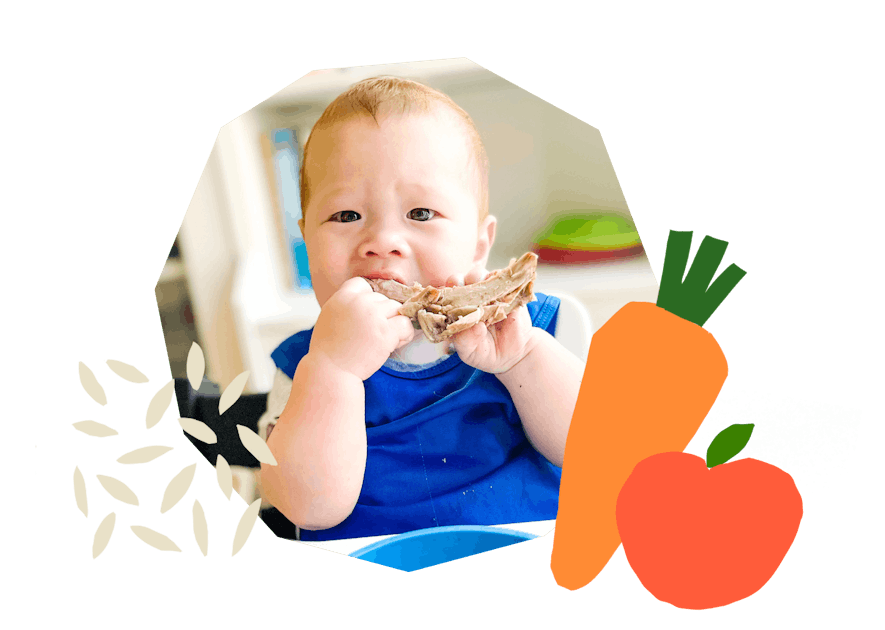
The Program Baby-Led Weaning with Katie Ferraro
A step-by-step digital program for starting solid foods safely and navigating the original 100 FIRST FOODS™ meal plan with baby-led weaning.
 EXPERT-LED, PROVEN APPROACH TO EATING REAL FOOD
EXPERT-LED, PROVEN APPROACH TO EATING REAL FOOD CONCISE VIDEO TRAININGS TO MASTER BABY-LED WEANING
CONCISE VIDEO TRAININGS TO MASTER BABY-LED WEANING 100 FIRST FOODS DAILY MEAL PLAN WITH FOOD PREP VIDEOS
100 FIRST FOODS DAILY MEAL PLAN WITH FOOD PREP VIDEOS
Baby-Led Weaning for Beginners Free Workshop
Is your baby ready to start solid foods, but you’re not sure where to start? Get ready to give your baby a solid foundation to a lifetime of loving real food…even if you’re feeling overwhelmed or confused about this next stage of infant feeding.
Get baby-led weaning recipes and tips delivered to your email inbox.

